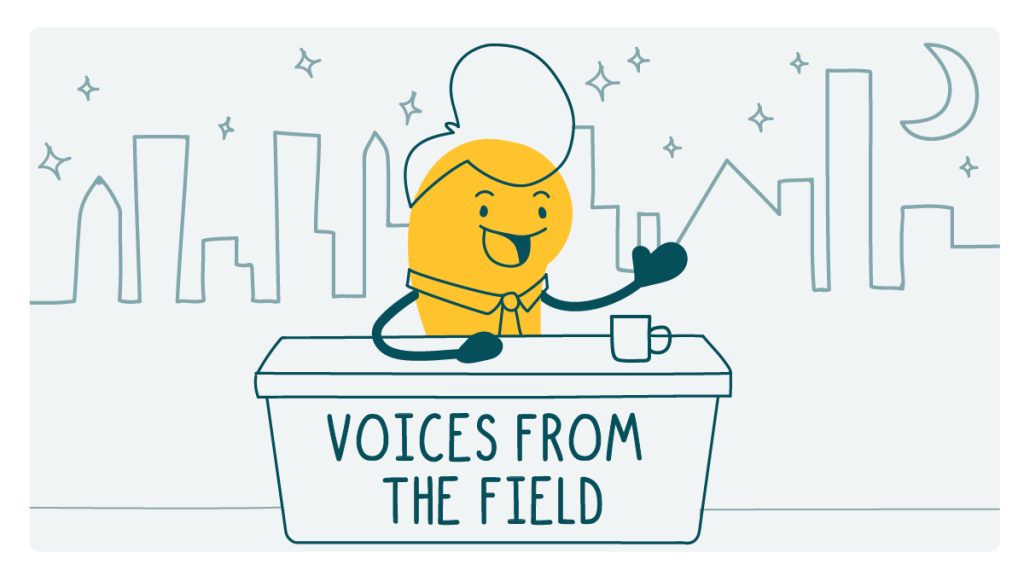
Sharpen your library cards — for the latest post in our series “Voices From the Field,” we talked with Katherine Maas, Chief of Staff at the federal Institute of Museum and Library Services (IMLS). IMLS invests in community institutions dedicated to bringing information, education, and art to the public. IMLS’s mission is to “advance, support, and empower America’s museums, libraries, and related organizations through grantmaking and research, which supports educational and workforce development.” In short, they’re helping to make our libraries and museums even more awesome.
When asked what professional achievement she’s been especially proud of recently, Katherine Maas doesn’t have to think twice. “This year, we launched InformationLiteracy.gov, a collection of over 120 resources to help library and museum professionals promote information literacy in their communities.” (At We ❤️ Health Literacy headquarters, we’re super proud to have helped create the Information Literacy website!)
Information literacy, at the most basic level, means the skills that people need to find, understand, evaluate, and share information — and it never seemed more important than now. That very much includes our all-time favorite, health literacy, along with digital literacy, financial literacy, and science literacy. “All of these areas are connected,” Katherine says. “Digital literacy affects your ability to find good information to help you take care of yourself. And financial literacy underpins people’s ability to live their lives and support themselves, their families, and their health.” As for science literacy, the COVID-19 pandemic proved to be a real eye opener about the need to break down, explain, and promote understanding of scientific processes.
Katherine notes that promoting information literacy and critical thinking skills can have a positive ripple effect into communities. In addition to helping people navigate today’s increasingly digital world, these important skills can have a tangible effect on workforce development. For example, understanding how to evaluate online information can help people apply for jobs (and avoid job scams!), earn a high school or college diploma, or learn a new trade to adapt to a changing job market.
It all comes down to helping people navigate their “information environment”: the people, organizations, and systems around us that collect, process, disseminate, and act on information. That’s where museums and libraries come in. “There are about 117,000 libraries and 22,000 museums in the U.S.,” Katherine says. “These local institutions are at the heart of their communities, and they’re able to see and help address information challenges that are unique to every community.”
Katherine points out that museums and libraries often serve as trusted messengers and spaces for learning for people in their community. And that puts them in the perfect position to help strengthen the skillsets people need to successfully navigate their information environment. “Libraries and museums encourage us to stop and think about how we know what we know. It’s hugely important for people to ask questions and think critically about what they consider facts — and ‘primary sources’ of information like history museums can play a big role in that.”
Finally, Katherine emphasizes that the point of the resources on InformationLiteracy.gov is to empower professionals — and by extension, the people in their communities — to have informed conversations about the issues that affect them, especially if that means navigating multiple perspectives. “When we developed InformationLiteracy.gov, we intentionally tried to bring people with different sets of expertise and different opinions to the table and share their strategies for reaching our common goal.” This collaborative approach has made InformationLiteracy.gov stronger and more adaptable to different settings and communities — and we think it shows!
The bottom line: Supporting information literacy may be one of the best strategies we have to help people navigate today’s complex digital environment. How lucky are we that there’s organizations like IMLS — along with thousands of museums and libraries across the country — to rise to the challenge!
Copy/paste to share on social (and tag us!): CommunicateHealth’s new post in the series “Voices From the Field” features Katherine Maas from the Institute of Museum and Library Services. Grab your #library card and check out this conversation: https://communicatehealth.com/wehearthealthliteracy/voices-from-the-field-katherine-maas-institute-of-museum-and-library-services/ #HealthLiteracy #HealthComm
Browse recent posts